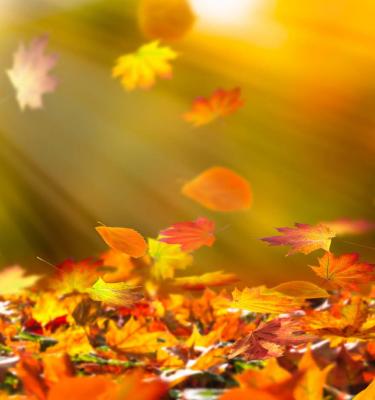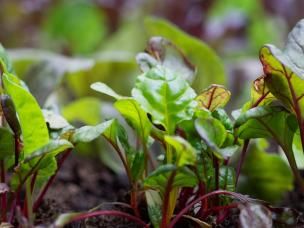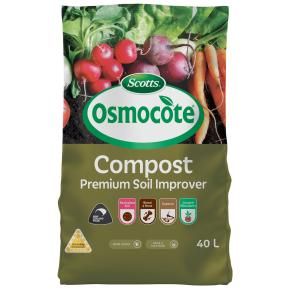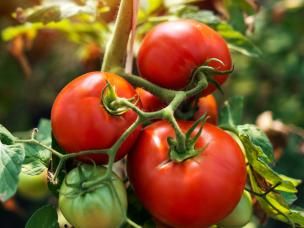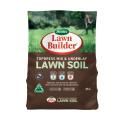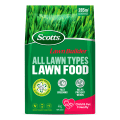March Gardening: Your Monthly Garden Guide
This month sees the beginning of autumn when the bounty of summer’s flowers, fruits and veggies are slowing, however it's still a huge harvesting season with plenty to enjoy.

What to plant in March and other March gardening tips
Summer’s seasonal flowers and veggies and the last of the fruit crops are coming to an end with the onset of cooler days and crisper nights. It’s a great time to make jams, sauces, relishes and preserves with the abundance of produce available, to tide you over the less productive months ahead.
As flowers and veggies fade, pull the plants out, dig over the soil, add compost and fertiliser and start preparing to plant autumn and winter flowers, bulbs and edibles. Choose your favourites from the categories below for lots of March gardening tips as we transition into the autumn months.
Vegetables
What vegetables to plant in March
While the days and soil are still warm and plants will settle in quickly, it’s the perfect time for planting. Check out what’s available in-store at your local garden centre or plant supplier.
Sowing seeds or planting out seedlings of winter veggies can begin from mid-month. Your crops will get a good start before colder weather slows down growth.
Here's a list of trusty vegetables you can plant in March in New Zealand:
Bok choi, Beetroot, Brussels sprout, Broccoli, Carrot, Cabbage, Cauliflower, Coriander, Celery, Leek, Kale, Lettuce, Onions, Mesclun, Radish, Parsley, Rocket, Rhubarb, Silverbeet, Spring onions, Spinach.
Growing vegetables in March
- Before sowing or planting, dig the soil over to a depth of about 30cm to work in some compost, then add a generous handful of garden lime per square metre as well as a suitable fertiliser.
- Allow rainfall (or watering) to wash the lime and plant food into the soil before planting preparation.
- Water deeply at least once a week if the weather is dry – add a wetting agent like SaturAid to ensure moisture penetrates deep into the soil.
- Hand pull or hoe out weeds as they appear – they compete for nutrients and moisture and may also harbour pests that could attack your crops.
What vegetables to harvest in March
As summer fades into memory, many vegetables will still have the last of their crops ready for picking.
- Leafy veggies like lettuce, rocket, silver beet, spinach and rhubarb should be picked/cut and either eaten while fresh or blanched/cooked for freezing.
- Beans, courgettes, capsicums, chillies and cucumbers may be snap-frozen or pickled.
- Ripe tomatoes may be turned into passata, sauce or chutney or simply peel, cut up and freeze in meal size portions (use within six months). They can also be bottled (preserved) for use over winter.
- Pumpkins should be left on the vine until the plants die, usually after the first frost of the season. Cut from the vine with a stub of stem attached and store on racking in a cool, dry spot with good air circulation. They will keep for several months.
- Potatoes should be dug before the weather turns cold and wet. Leave them out in the sun for a day to dry then brush off loose soil and store them in a dark, cool place, again with good air circulation to minimise rotting.
Fruit
If you’re wondering what fruits to plant in March, then it’s the perfect time of year to get some evergreen trees and bushes in the ground. Elsewhere in the garden there are plenty of fruits to be harvested – from apples and pears to strawberries and raspberries.
What fruit to plant in March
Evergreen fruiting plants may be put into the garden now while the soil is still warm – passionfruit vines and citrus among them. Deciduous fruit trees in pots should be left until they are dormant and have lost all their leaves before being transplanted into the garden. Together with new bare-root fruit trees, they are best planted in mid to late Winter.
Growing fruit in March
- Pick up and dispose of any fruit on the ground under fruit trees – they may be diseased or harbouring insect pests – don’t put them in the compost bin!
- Remove and dispose of diseased or “mummified” fruits clinging to branches to avoid diseases spreading or over-wintering on trees.
- If the weather is hot and dry, keep watering new fruit bushes and trees regularly – especially those in containers.
- Look out for heavily laden branches of apple and pear trees that may need some extra support. You can provide this by supporting the branch from below with a stout stake, or by attaching a strong rope from the branch to a nearby fence or structure.
What fruit to harvest in March
Most of the summer fruits like apricots, peaches, plums and nectarines will have finished by now but there should still be good crops of mid to late season fruits maturing. These include:
Apples, Pears , Raspberries, Grapes, Figs, Melons (rock and honey dew), Mandarins, Selected oranges, Passionfruit, Persimmons, Pomegranates, Quinces.
Flowers and Bulbs
When it comes to deciding what flowers to plant in March, it’s all about looking forward to what colours you want to see in your garden next year. There is no shortage of choice this month, with both bulbs and seeds taking well to the soil, so choose carefully and make sure you leave lots of time for that all-important garden maintenance.
What flowers and bulbs to plant in March
There are plenty of flowers that can be planted in March to give the garden a flush of colour next year.
- Daffodils, jonquils, ranunculus, anemones, freesias but not tulips yet even though bulbs will be in stock. Tulip bulbs should be placed into the vegetable crisper section (not the freezer!) of the refrigerator now in preparation for planting in early May. They need a period of cold before planting, to break their dormancy.
- Sow sweet pea seeds on St Patrick’s Day for best results. For small-space gardeners, there are now bushy sweet peas that don’t need trellises.
- Seedlings of pansies, violas, bellis, calendulas, cinerarias, cornflowers, honesty, hollyhocks, Iceland poppies, nemesias, polyanthus and primulas for cool climates. Marigolds, impatiens, delphiniums will all do well in warmer areas.
- Perrenials like hostas, hellebores, dianthus, pin cushion (scabiosa), gaura can also be planted in March.
Plant seedlings of the following
Growing flowers and bulbs in March
There are a few key pieces of maintenance to continue into March to keep your flowers looking good.
- If the weather is still hot and dry, keep watering flowers – particularly those in containers as they will dry out quickly.
- Tidy up the garden by removing spent flowers and flower spikes from perennials and annuals.
- Dahlias and chrysanthemums may need staking and/or the ties checking to ensure they are not cutting into stems.
- You can remove any summer bedding which is past its best and add it to the compost heap.
- Finally, it’s time to get ready for next year by saving seeds from flowering plants.
Recommendation: If you prefer a more natural looking lawn, you can plant bulbs among the grass to create a swathe of spring colour. Use a bulb-planting tool to cut and remove a plug of turf, place the bulb in the hole, and replace the turf. Alternatively, you can use a sharp trowel to cut a slit in the turf and place the bulb in the bottom.
March lawn care
Summer can be harsh on lawns, especially during drought and heatwave conditions. This month is a great time to repair the damages caused by the ravages of the season just passed.
- De-thatch with a garden rake to remove build-up of dead grass, especially in buffalo, kikuyu and couch lawns.
- Aerate the lawn with a garden fork or you can hire a coring machine suitable for home gardens.
- Top dress with Scotts Lawn Builder Lawn Soil.
- Water entire lawn area, if permitted, to settle topdress mix.
- Fertilise with Scotts Lawn Builder All Lawn Types Slow Release Lawn Food or the Lawn Builder Extreme Green hose-on.
- Worn and bare areas may be over-sown with lawn seed to match you existing grass type or patches of instant turf.
